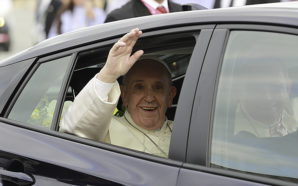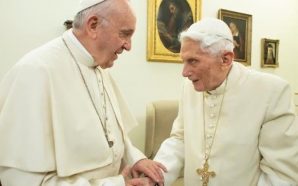It was no small irony that the Latin American church’s first continent-wide “ecclesial assembly” took place inside a silent, walled compound, far from any madding crowd. North of Mexico City in Cuautitlán Izcalli (n Náhuatl, “your house among the trees.”), for a week at the end of November, in the era of Covid-19 and Zoom, over 1,000 people—120 in-person assembly members, joined online by another 900 delegates—came together at the behest of Celam, the Council of Latin American Bishops’ Conferences, to discuss and discern.
The Asamblea Eclesial had been the pope’s suggestion, as was the location in Mexico, so that it could be under the “maternal protection of Our Lady of Guadalupe, patron of Las Américas.” The assembly began and ended with Mass at her basilica in Mexico City, but the gathering was in Casa Lago, named for the nearby Lake of Guadalupe, which belongs to the Mexican bishops’ conference. An unlikely Briton among the dozens of bishops, religious, clergy and lay people from more than 20 nations across Latin America, I had accepted Celam’s kind invitation to be an asambleístapresencial (an in-person assembly member) there.
The task? First, to attune our ear to the cry of the people, whose voices were captured in “a narrative synthesis,” a summary of a four-month listening exercise earlier in the year, to which some 70,000 people contributed, either as individuals or on behalf of their communities. Second, to hear from church leaders, theologians and prophetic witnesses across Latin America, who gave talks and testimonies live or in videos that were streamed throughout the week on YouTube. Third, to gather in around 50 small groups—a few of us in Casa Lago, linking up with the majority Zooming in—to hear how the spirit could be calling the church in Latin America at this time. The time is now 15 years on from the groundbreaking Celam conference at Aparecida, Brazil, in May 2007, and eight years into the reform by St. Peter’s first Latin-American successor, whose pontificate has been inspired by the remarkable discernment and insight that took place at that Brazilian shrine.
In January 2021—Covid-19 had put the assembly preparations back a year—Francis sent a video message making clear this was to be a very different beast from a general conference of bishops: “It is something else: a gathering of the people of God, of laywomen and men, of men and women religious, priests and bishops—the people of God walking together. Praying, talking, thinking, discussing, and seeking the will of God.” His point was that a missionary church—one that constantly goes out, alert to new situations and contexts, ready to abandon old ways and to take on new ones when needed—is by definition one that allows for the participation of the whole body, as in the Acts of the Apostles.
To continue reading Austen Ivereigh’s reflections on the assembly, click here.
Austen Ivereigh is a Fellow in Contemporary Church History at Campion Hall, at the University of Oxford. His latest book is Wounded Shepherd: Pope Francis’s Struggle to Convert the Catholic Church, published by Henry Holt.
With thanks to America Magazine and Austen Ivereigh, where this article originally appeared.








